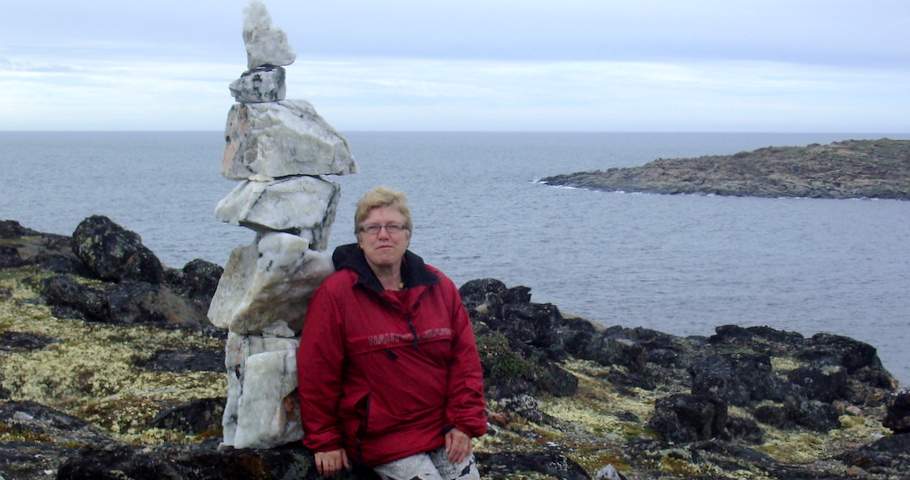Despite the fact that the Youth Directorate asked a task force in 1995 to look into different aspects of the problem for children at risk of neglect or neglect, we have had to realize for several years that this did not happen to them. not allowed to claim to develop a plan of life not only permanent but satisfactory for these children.
Wednesday, July 18, 2018
Monday, April 16, 2018
Good health for Inuit women means addressing poverty and financial insecurity
This is not meant to challenge anyone. It is important that you hear that the Inuit are hurting and I ask you politely to hear me out.
Perhaps, the people of the North haven’t always been listened to like they should because they do not talk like us or think like us and they do not act like us when pushed against a wall, and so, they have not been heard. They are so far away and there is little information trickling south about them.
The plight of the Northern people is easy to dismiss because we don’t see them and like someone pointed out, the information is skewed.
Perhaps, the people of the North haven’t always been listened to like they should because they do not talk like us or think like us and they do not act like us when pushed against a wall, and so, they have not been heard. They are so far away and there is little information trickling south about them.
The plight of the Northern people is easy to dismiss because we don’t see them and like someone pointed out, the information is skewed.
Wednesday, January 31, 2018
The power to make a difference, but what about political will?
In 1997, the Human Rights and Youth Commission, alerted by the lack of services available to children in need of protection, concluded a five-year-long investigation by pointing out that overcrowded housing in Nunavik posed a very serious threat to the development and well-being of children. This issue, the lack of housing in Nunavik, has been dragging on for years.
The present situation looks the same
Ten years later, between 2007 and 2010, the situation is similar. There, families and social workers are struggling with the placement of children because available families are often far away from the communities. As Nunavik is a gigantic territory, these communities are often thousands of kilometres apart.Sunday, October 29, 2017
Relative homelessness refers to people living in spaces that do not respond to basic health
In Inuit culture, elders are custodians of a millennial wisdom and knowledge. Only they can transmit the wealth of traditional Inuit culture to future generations. Nevertheless, an element of continuity is necessary to maintain the fundamental values, traditions, language, and resources that characterize Inuit culture. To this end, all of the regional Inuit communities are linked to the larger Inuit community of Canada.
Friday, July 14, 2017
Restoring at risk communities-doing it together in the pursuit of social justice
The Honourable Carolyn Bennett, M.D., P.C., M.P., Minister of Crown-Indigenous Relations and Northern Affairs says it very well: ‘’Children are our future, and to give them the best possible start in life, we must collectively move from an intervention-based approach of apprehension and protection to prevention-based approaches to community, families and children's rights and well-being. There needs to be better access to mental health services, children need to be protected from sexual exploitation and children’s rights need better protection.
Working in genuine partnership with First Nations is critical to developing community-led solutions for reform that will reduce the number of children in care and result in better health, education and economic outcomes.”
Friday, May 19, 2017
Overcrowded housing of the most northern communities contributes to the maintenance and rise of social problems
 The purpose of the project No Child Should Take the Long Way Home in its final objective is to empower mothers in Nunavik communities in Quebec, Canada to become safer, to be aware of their legal rights, and families to understand the risk factors leading to the removal of their children. Safety standards for women and for children must be designed in services offered to the population of isolated communities.
The purpose of the project No Child Should Take the Long Way Home in its final objective is to empower mothers in Nunavik communities in Quebec, Canada to become safer, to be aware of their legal rights, and families to understand the risk factors leading to the removal of their children. Safety standards for women and for children must be designed in services offered to the population of isolated communities.Overcrowded housing in northern communities contributes to the maintenance and rise of social problems and largely affects safety issues in Nunavik and Nunavut's women and children.
Friday, March 24, 2017
Mothers should have a safe place to go to with their children
 In April 2016, I embarked on an 8,000-kilometer walk across Canada to:
In April 2016, I embarked on an 8,000-kilometer walk across Canada to:1- Raise Canadians' awareness of the reality of Inuit women and children in Nunavik, Quebec;
2- Raise funds to build a safe house for the children of a Nunavik village in northern Quebec.
To date, I have covered five thousand five-hundred and eighty-two kilometres in British Columbia, Alberta, Saskatchewan, Manitoba, parts of Ontario and Quebec.
No Child Should Take the Long Way Home is seeking solutions to counter the number of placements Inuit children are subjected to and to help the mothers recover their children. On September 26th, I had covered 5582 kilometres. The next lap from Rossport, Ontario (2418) should bring me to the end of the 8000-kilometre journey.
Subscribe to:
Comments (Atom)











